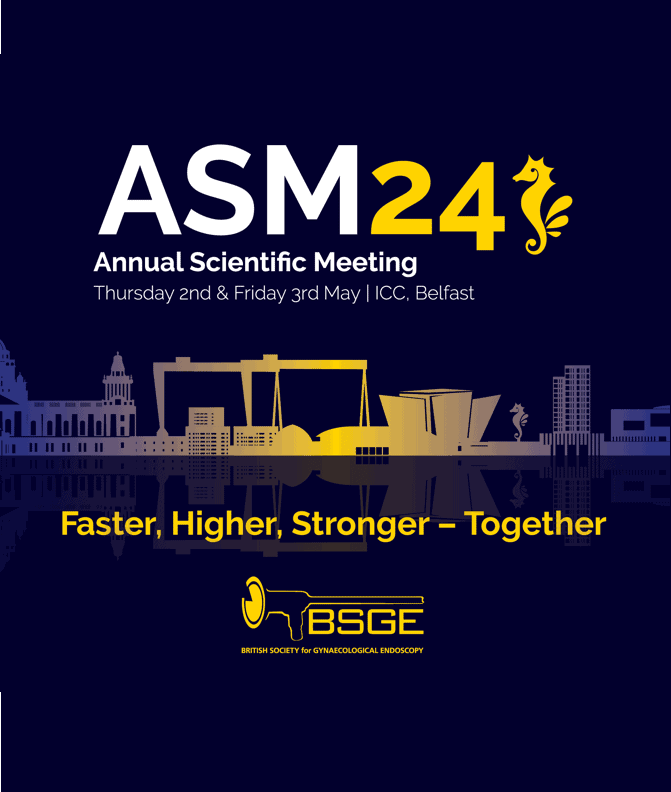The BSGE and RCOG have released a joint statement on Thoracic Endometriosis care in the United Kingdom.
BSGE President Justin Clark and Martin Hirsch, Consultant Gynaecologist Oxford University Hospitals, said:
‘The BSGE and RCOG aim to standardise care for people with thoracic endometriosis and are committing to centralise thoracic endometriosis care. We are pleased to be taking positive steps towards improved endometriosis care in the UK.’
In the BSGE Scope Newsletter 2021 Martin Hirsch and Islam Gamaleldin wrote:
‘The true prevalence and age incidence of Thoracic Endometriosis remains unknown and while it is thought to be rare this may represent a largely under-diagnosed disease with little research existing beyond case reports.
‘The diagnosis and management of patients with TE is challenging with delays in diagnosis commonly experienced. This is due to the lack of awareness of the condition among clinicians (gynaecologists, thoracic and general surgeons, radiologists, and accident and emergency doctors) and the absence of national / international recommendations or guidelines to support clinicians in the diagnosis and management of this group of patients.’
The joint statement aims to increase awareness of Thoracic Endometriosis and sets out RCOG and BSGE aims for Thoracic Endometriosis care. The full statement on Thoracic Endometriosis Care and an infographic to raise awareness of this challenging condition are included below. The statement is also available for download by clicking here: BSGE Statement on Thoracic Endometriosis care in England.ToRCOG-EC_MH.CLEAN (MH100122).
Official statement
The thorax is the commonest location for extra pelvic endometriosis affecting up to 12% of those with pelvic disease. Thoracic endometriosis (TE) represents a spectrum of disease with endometriotic lesions being found on the diaphragm, pleural surfaces and / or lung parenchyma. The condition rarely occurs without pelvic disease. The main clinical manifestations include:
There is limited evidence to guide accurate diagnostic tests and efficacious therapeutic interventions internationally (1).
The BSGE was approached by Endometriosis UK and patient representatives asking for a review of TE care in the United Kingdom (UK). The concerns raised included a lack of standardised treatments, geographical inequity in accessing care, and a lack of coordinated care nationally.
In response to these concerns, the BSGE conducted a survey of its members to establish their current practice and views on managing patients with TE. The survey results revealed low rates of screening questions being asked in clinic and low numbers of clinicians routinely looking for TE at the time of surgery (2). The majority of respondents surveyed felt that the care of patients with TE should involve a multidisciplinary team within centralised centres of excellence.
We believe that centralising the care of women with TE can improve clinical outcomes by allowing higher caseloads within a few specific units leading to greater experience and acquisition of expertise. Women with TE will benefit from better co-ordination of multidisciplinary care within specialist centres across the UK. Such an approach is in keeping with the aims of the Department of Health UK Strategy for Rare Diseases (3), enabling more accurate and timely diagnosis, and the potential for improved treatment outcomes. Concentrating care in this way can also facilitate research into the disease prevalence alongside the safety, effectiveness, and long-term prognosis of treatments.
In line with the recent All Party Parliamentary Group Report into Endometriosis Care (4) the BSGE supports:
-
-
Working closely with BSGE members and patient representatives to understand the disease burden of TE.
-
Working closely with patient representatives and funders in the development of a centralised pathway of care for TE.
-
Please download this infographic and share on social media to increase awareness of Thoracic Endometriosis.

References
- Nezhat C, Lindheim SR, Backhus L, Vu M, Vang N, Nezhat A, et al. Thoracic Endometriosis Syndrome: A Review of Diagnosis and Management. JSLS : Journal of the Society of Laparoendoscopic Surgeons [Internet]. 2019;23(3):e2019.00029.
- Hirsch M, Berg L, Gamaledin I, Vyas S, Vashisht A. The management of women with thoracic endometriosis: a national survey of British gynaecological endoscopists. Facts Views Vis Obgyn. 2020;12(4):291–8.
- Department of Health & Social Care. The UK Strategy for Rare Diseases: 2019 update to the Implementation Plan for England. Department of Health and Social Care. 2019;(February).
- Endometriosis UK. (2020) All Party Parliamentary Group on Endometriosis. Available at: https://www.endometriosis-uk.org/sites/endometriosis.uk.org/files/files/Endometriosis%20APPG%20Report%20Oct%202020.pdf. Accessed 06/07/2021




